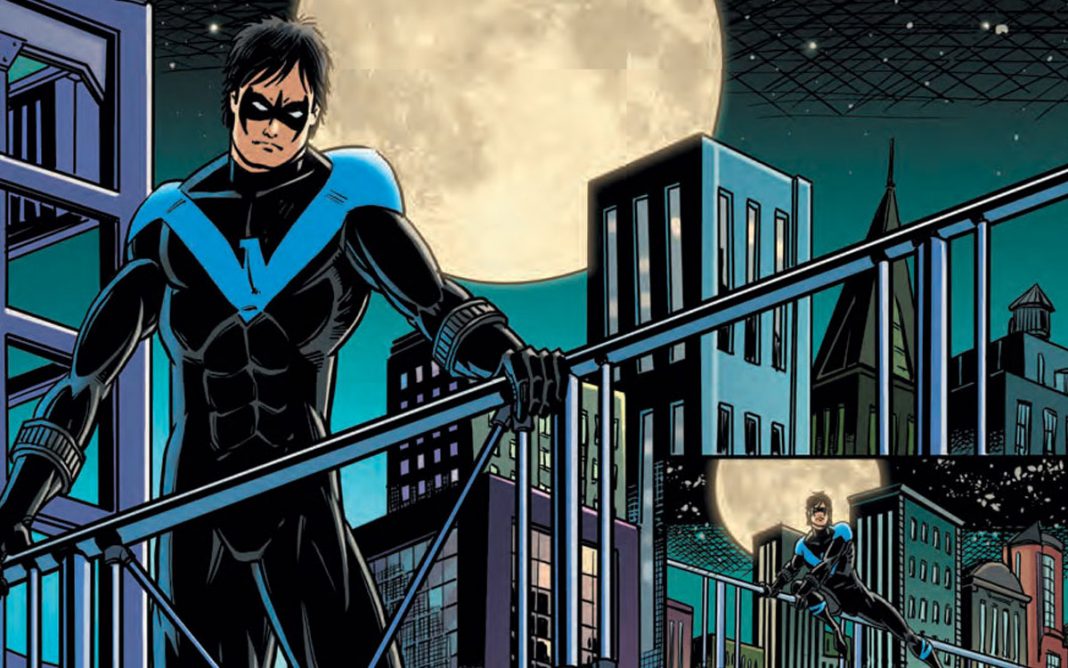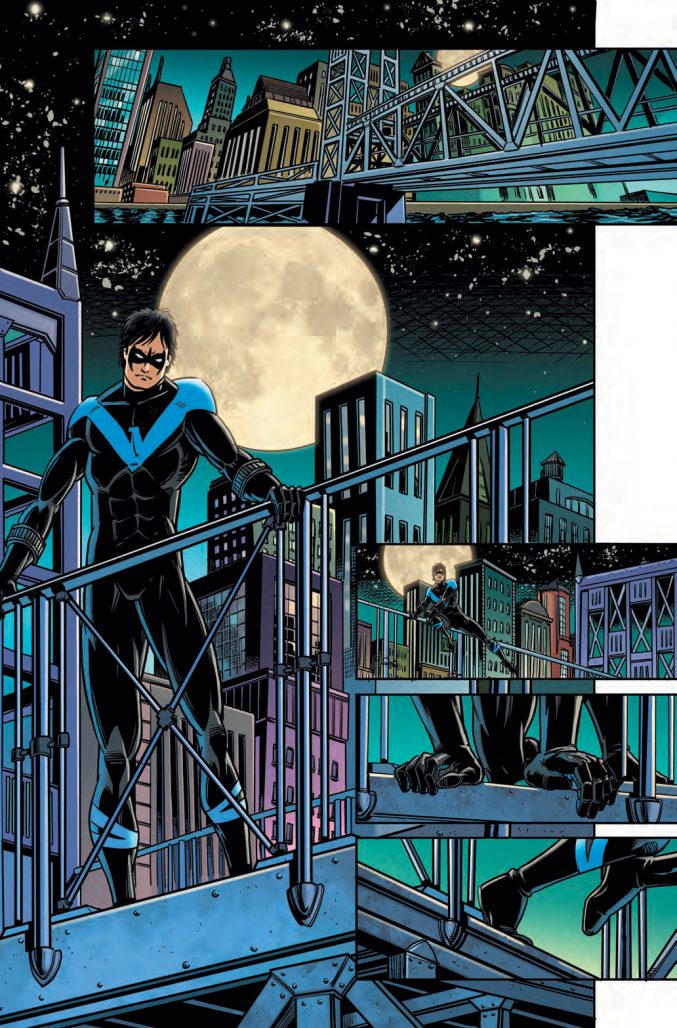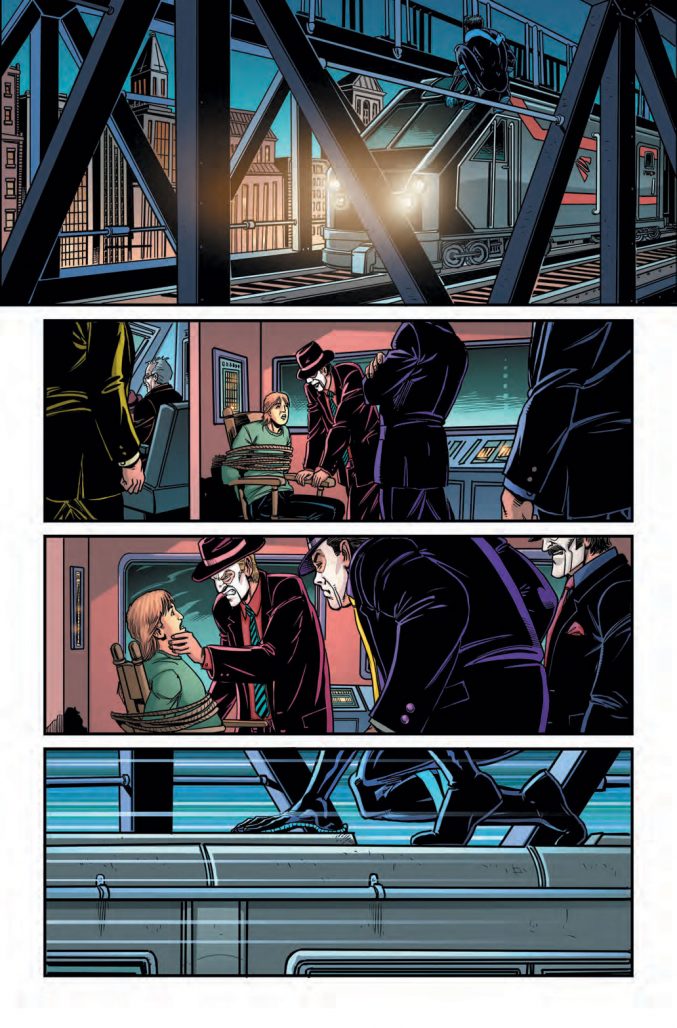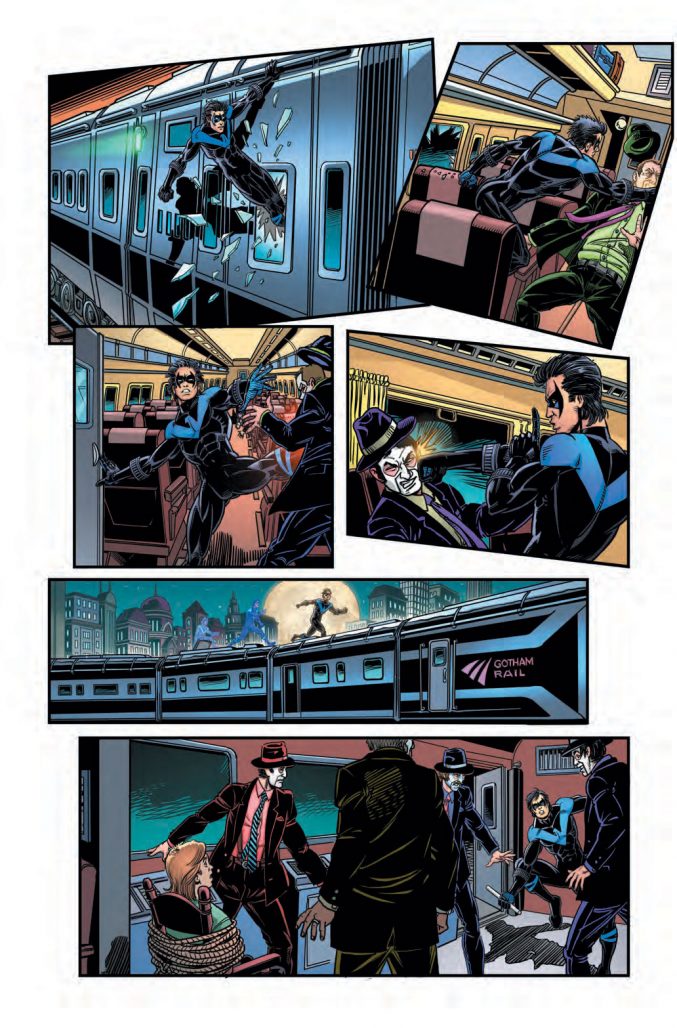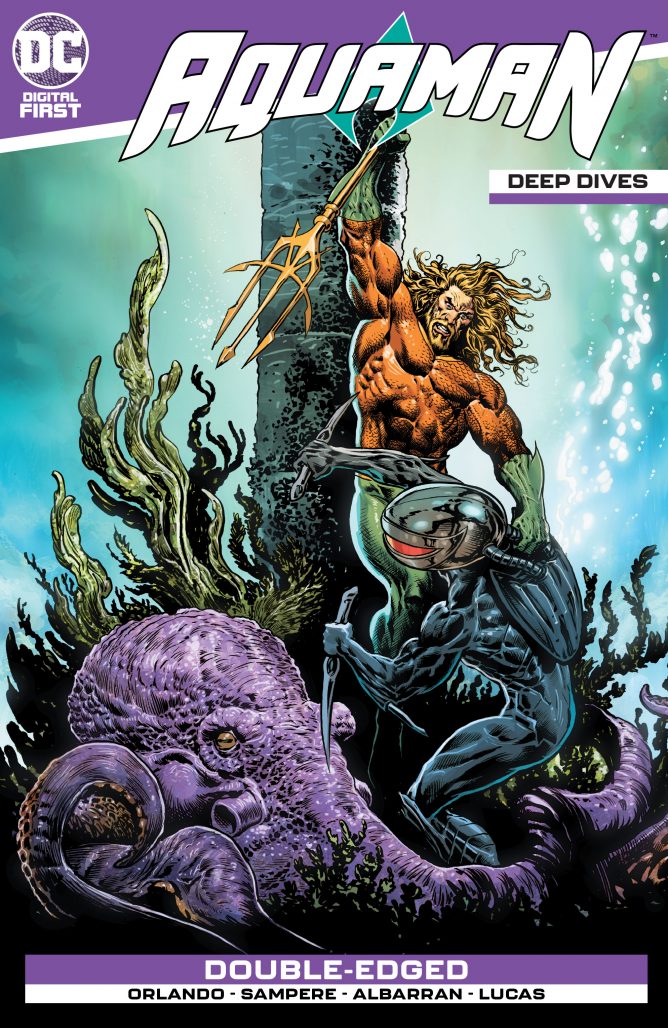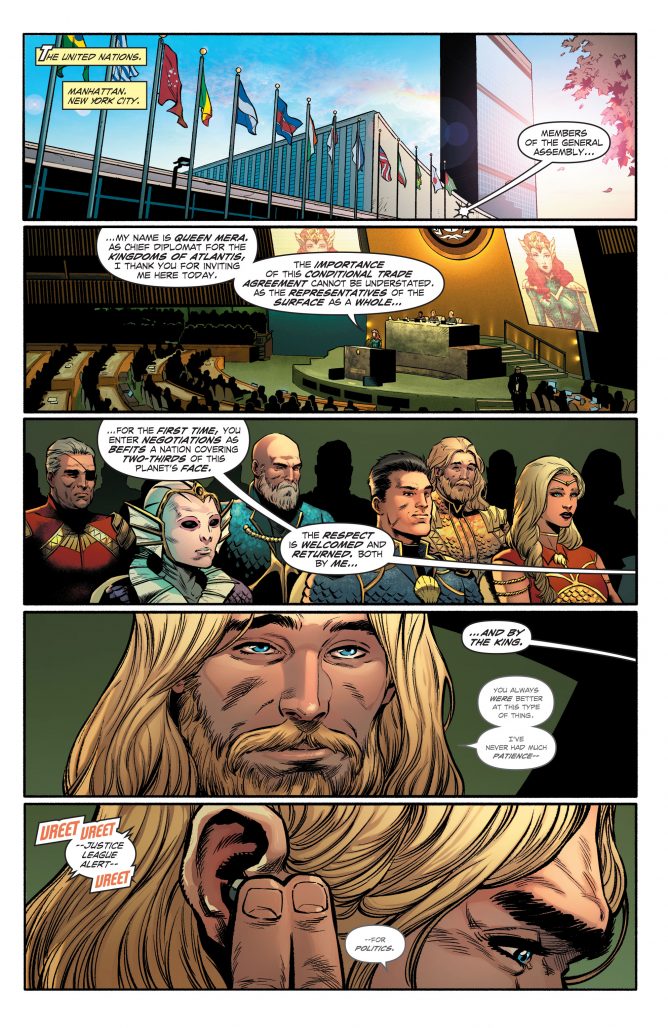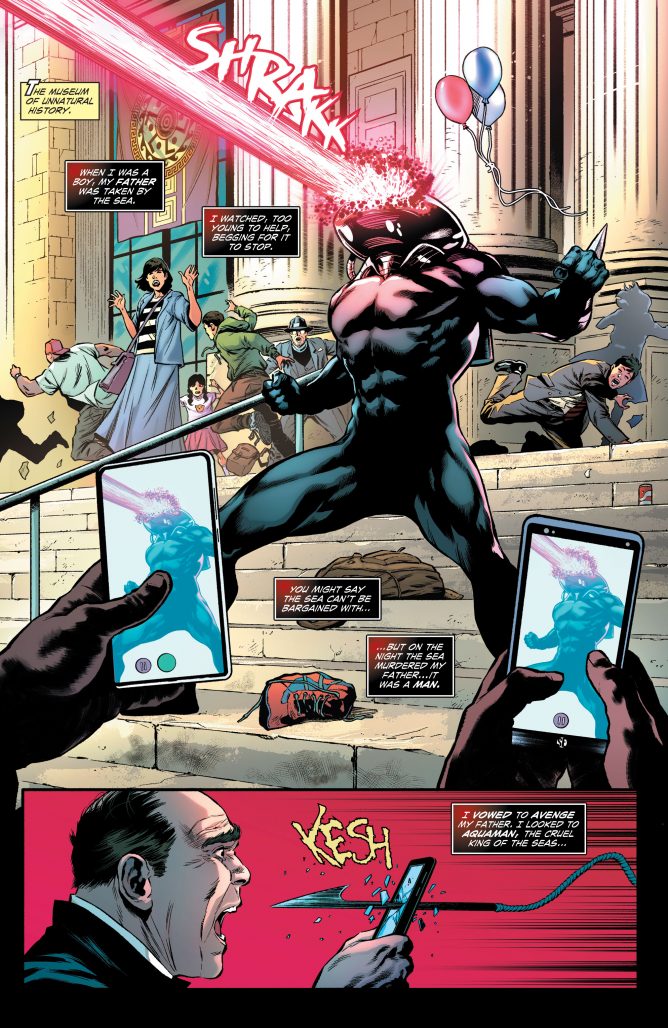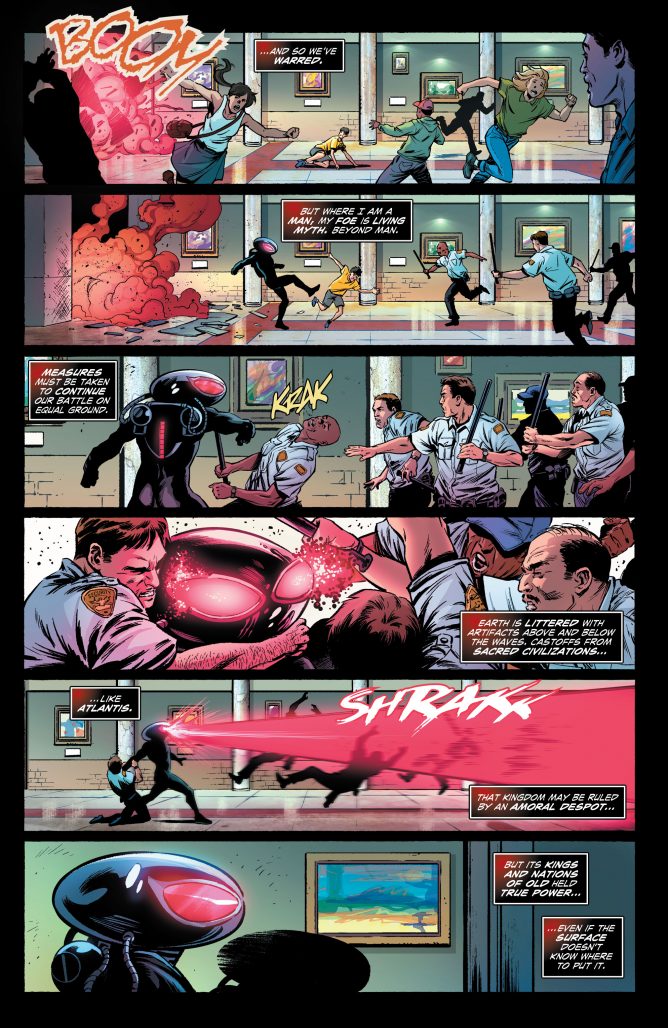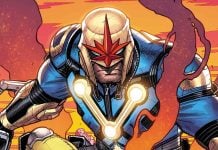In an effort to put comics back into the hands of readers during the global pandemic, DC worked with two new distributors to release print comics on April 28. One of the new releases for the first week back of print comics was Batman Giant #4. The Beat’s Joe Grunenwald sat down with Mark Russell to talk about his lead story in the issue, and I was able to talk to Steve Orlando about his Nightwing centric story, drawn by the late Tom Lyle. We also talked about Orlando’s Aquaman story from DC’s digital-first series Deep Dives.
The Beat: It’s been a while since you wrote Nightwing, what was li like coming back to him?
Steve Orlando: A great opportunity! It’d been too long since I’d made Nightwing walk the tightrope – in fact, the last time was when he did so right into a Kaiju’s mouth! So I was eager to get back into his head and think about what makes him who he is, what makes him his own unique hero, different than Batman even though he trained with him. I wondered how my own opinions would have changed with the time passed since I last worked with Nightwing, and it was refreshing to think about the original Boy Wonder in a whole new light.
The Beat: This story really felt like a kind of spiritual successor to “Batman: Year Three” was that intended?
Orlando: You’re very observant! We wanted to challenge Nightwing in an homage to that story for sure, but also bring it into the present, and tell a quick, clean story that tells you everything you need to know about Dick Grayson in eight pages: no matter how much he’s tempted to the dark, to vengeance, he always soars above.
The Beat: There were a couple of panels of Nightwing’s famous, uh, assets. Did you write those into the script, or did Tom Lyle just bless us with them without direction?
Orlando: That’s the blessing of Tom Lyle! Tom was always able to get to the core of the character, and what makes him an icon. And with Nightwing…that starts at the bottom.
The Beat: Speaking of Tom Lyle, this piece is coming out about six months after his passing, how does it feel seeing it now?
Orlando: It’s bittersweet, to be honest. Tom was one of the first artists to ever take a chance on pitching with me when I was fourteen, and we pitched DC NIGHTMASTER – it didn’t go anywhere, but we kept in touch, and I never forgot. To be part of his last work is an honor, from a reader of his when he designed Scarlet Spider, to a perspective collaborator on the pitch, to a co-creator on this story. Tom was a giant to me, and I’m glad I could work with him, so fucking glad.
The Beat: To bring things back to a lighter topic as Dick Grayson would want, how do you feel about the retconning of his Robin costume to include pants?
Orlando: Hey if Diana DOESN’T need pants, then does Dick?
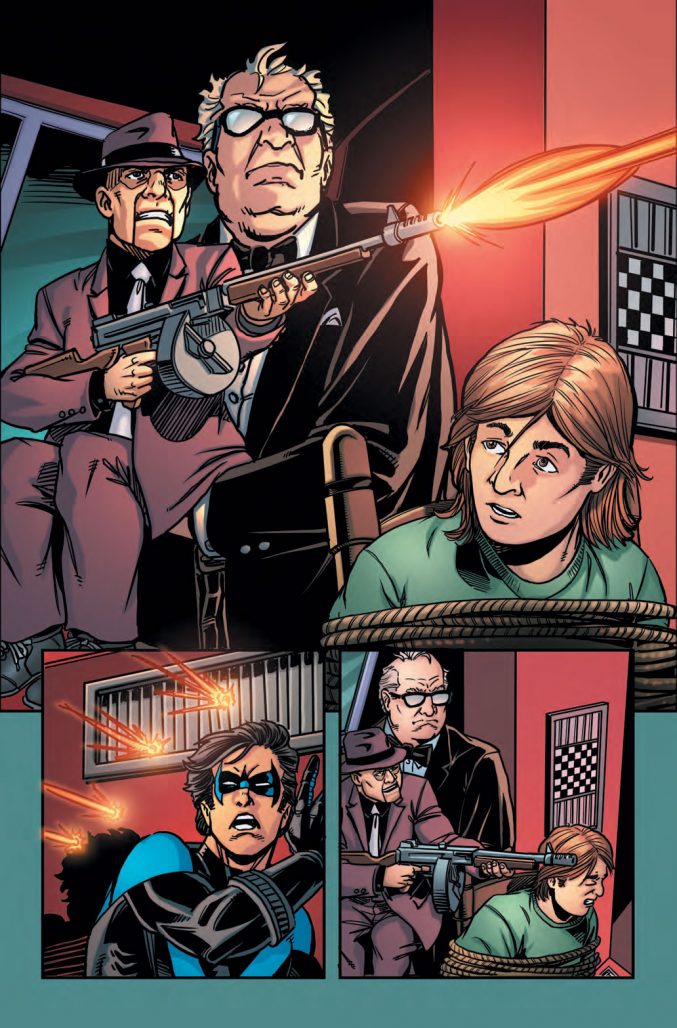
Orlando: I love, honestly even though it’s basic, The Judas Contract, where you see Dick make the steps to become Nightwing, grow into the role, and step into the future as a man.
The Beat: Your Aquaman story was heavily tied to mythology, similar but of a different sort to your Wonder Woman run. What’s it like coming up with these additions to mythology?
Orlando: Incredibly fun! I think back to myth and the stories are often object lesson, with moral consequences. So it was so fun to mold that with some little known DC lore and create the artifact we based the story around. To me, it was a classic case of mythic catch-22, be careful what you wish for, and in creating that for this story we got to show a new connection within the DCU and make my classics professor from college doubly proud.
The Beat: You portrayed Arthur as very strong, yet also acknowledging of one of his own biggest flaws, how important was it to you for him to recognize and speak to that?
Orlando: Very important, no doubt. To me, that’s the key to the merging of Aquaman’s silver and modern age personas – he can be a hothead, he can be that Peter David hook hand stabbing, Jason Momoa grunting loner of the sea. But he ALSO has the strength of self-reflection, he KNOWS he’s got these tendencies, and he’s tempered them with his responsibility as kind. And that too goes back to myth — so many times kings are punished for their ego, their hubris. Aquaman recognizes his, but is a hero in owning it, wielding it, and not using it as an excuse, a hero in turning his faults into strengths.
The Beat: You’re a big wrestling fan, and that shows during this fight scene with Aquaman powerbombing Manta. What would Arthur’s entrance music and finishing move be?
Orlando: AAAACTUALLY someone clocked it on twitter and I was so proud – that’s an ALABAMA SLAM my friend!
You know, as music goes, I actually did really like the sequence in Justice League where Aquaman was walking hard to “Icky Thump” by the White Stripes. But in the interest of playing the game, I’ll also submit “Crusader’s Anthem” by Dream Evil for an Aquaman entrance.
The Beat: Any other ideas for superheroes as wrestlers you’d want to throw out here for fun?
Orlando: Oh I mean have had COUNTLESS people deliver Charlotte’s BIG BOOT and Roman Reigns’s SUPERMAN PUNCH, I promise.
Well, Demolition Man at Marvel IS a pro-wrestler, which I love. And Bane was obviously inspired by Lucha Libre. But that said, I think even if he never said it, even if he didn’t know it, General Glory has always been working and living the gimmick at his heart.
The Beat: Lastly, what projects do you have upcoming you’d like to talk about?
Orlando: Yes! Coming originally in JUNE and now hopefully for the fall, post-quarantine, is Kill A Man – an LGBT Mixed Martial arts OGN epic from me, Phil Kennedy Johnson (The Last God at DC) and Alec Morgan (Midnighter at DC). Out from AfterShock comics, and easily my proudest work in a long, long time – just kicking ass telling stories that have never been told before. It’s raw, it’s real, and it’s really fucking good.
Batman Giant #4 is out in open comic shops and digitally this Tuesday, April 28th.


